Is weight lifting helpful?
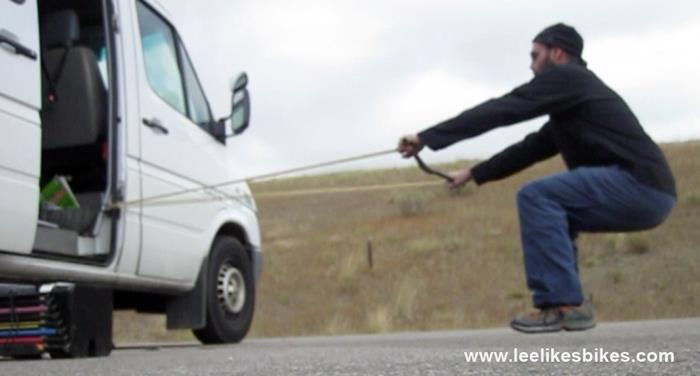
Hi Lee,
I enjoy your bike wisdom on a regular basis. Something has been bothering me lately.
I’m wondering if all the plyometric-type training and weight lifting that mountain bikers are doing is actually doing that much to improve their bike riding skills.
The recent research suggests that lifting weights and doing plyometric exercises (even if they incorporate “bike muscles”) only make you better at lifting weights and better at these specific exercises.
There seems to be no significant carry-over to actual bike riding skills (aside from the obvious cardiovascular fitness and overall increase in strength and muscle mass).
The most relevant training must mimic the speed of movement that a mountain biker would need while blasting down a DH track. This is difficult to do in a gym. Do you agree that the best training is on an actual bike?
Trey
Hey Trey,
Thanks for the awesome question. I apologize it’s taken months to respond; I wanted to give you a detailed answer, and this got buried by the busy season.
What do I know? I’ve been “working out” in various ways since I discovered the wonders of bench press at age 15 (I was convinced a 300-pound max would get chicks). I studied exercise physiology in college, and I’ve tried to stay on top of current thinking. Despite ordinary talent and extraordinary injuries, I manage to perform decently well. So I know a few things, but more importantly:
For the past two off seasons I have been working closely with Erin Carson, master trainer and general manager of RallySport Health and Fitness in Boulder, CO. Erin is the real deal: She trains athletes of all styles and levels — from rehabbing my wife after she created the twins to helping elites win big races — and she herself is an Olympic basketball player and a top age-group long distance triathlete. Erin knows her stuff, and I’ve learned a ton from her.
Last winter Erin trained me and junior national DH champion Alex Willie. Alex got so strong!
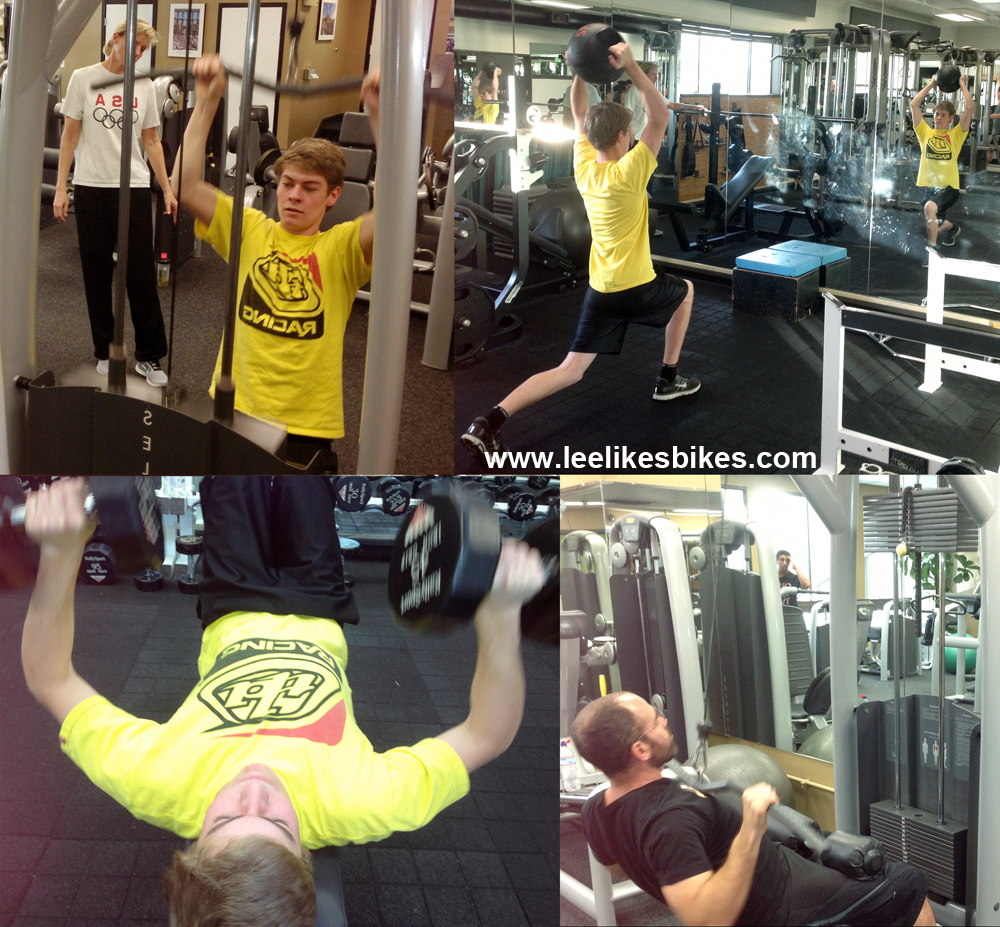
This can go on forever. For now here are some basic benefits of off-bike strength training:
Maintaining muscle. If you’re over 30, you are becoming weaker and more frail every day. Strength training combats age-related loss of muscle mass. I rode with world champion Brian Lopes last week. He’s 40. He still lifts regularly. Neither weak nor frail that guy.
It’s been 20 years since I’ve ridden Laguna with Brian. I’m way faster than before … but so is he!
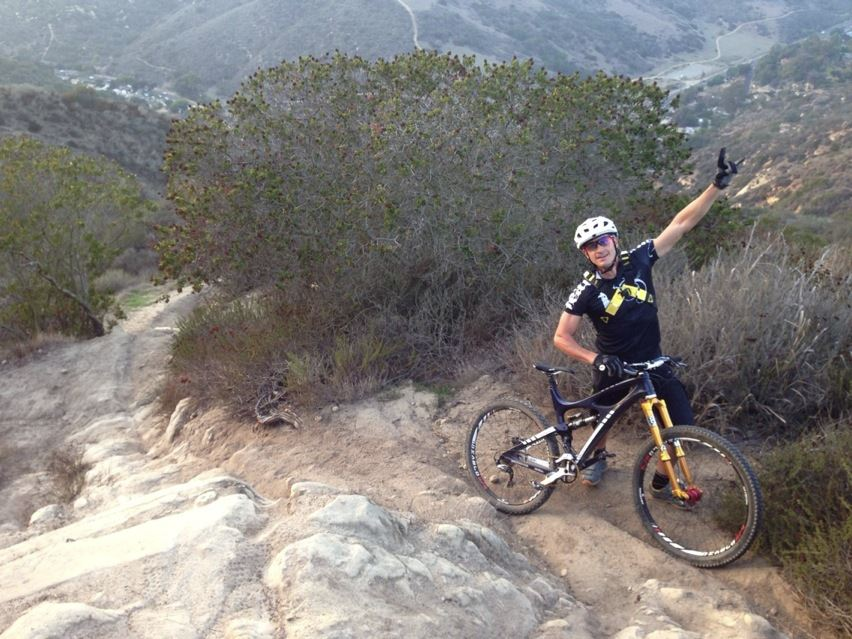
Increasing stability. The more stable you are — especially your core — the harder/longer/better you can pedal, pump, corner, etc. What is stability? Put one way, it’s the ability to maintain proper balance and alignment when terrible things are happening. When you smash a rock in a corner, do you get thrown off line? When your rear wheel slips on a steep climb, do you collapse forward? Probably.
We all think we are strong, but most of us are unstable in ways we don’t even understand. Watch Rachel Atherton vs. the other pro female downhillers. These riders are all faster than we are, but watch how Rachel handles violence. She is way stronger than most of her competition. And way stronger than us.
Find out how unstable you are: Go to a Pilates class with your girlfriend or wife. The big muscles in your arms and legs will not help you there. You will get your ass kicked. If you are young and strong, you won’t care about this, but I implore you all: Learn about true core stability, and start building it now. Before you get hurt.
Increasing mobility. I see this every day in my skills classes. If you can’t move well, you can’t ride well. Period. The gym is a great place to develop clean, functional and ultimately powerful movement patterns. Especially if you have a qualified trainer like Erin.
RallySport fun with DH national champ Alex Willie and his pinner brother Chase.
Improve sport-specific movements. For cyclists, that’s a lot of leg pushing and arm pulling. The stronger you can push with your legs, the stronger you can pedal. Duh.
Mountain man style: Alex carries his weight at my house.
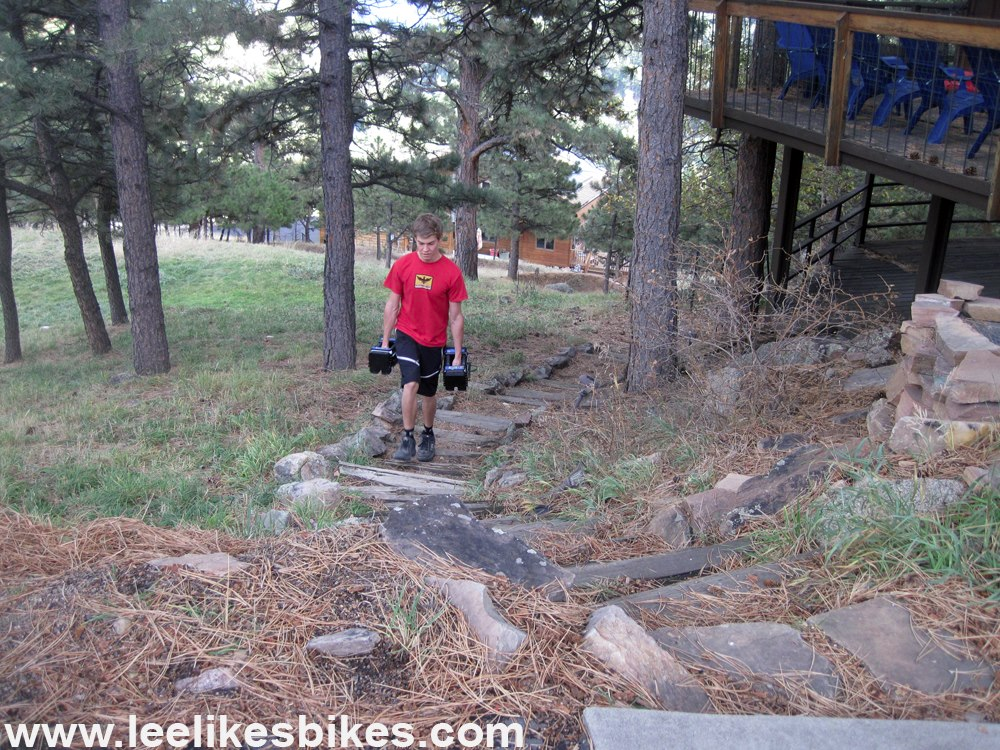
Horizontal row. Funny, when I envision this I have more hair and straighter shoulders.
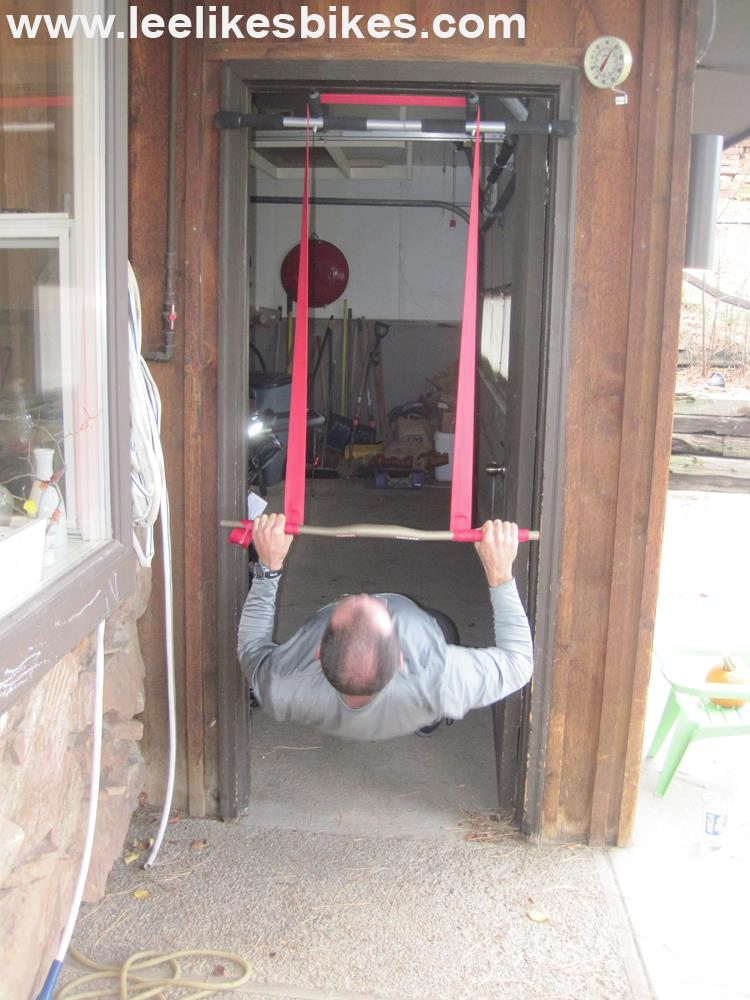
Be a real athlete. As cyclists, we get pretty strong in some ways — and really weak in others. Working out off the bike helps us maintain overall function and strength. Can you carry bags through the airport? Can you lift a couch? Can you fight a bear? Those actions don’t get trained on your road bike, bro.
Real-life movement with a Vipr.
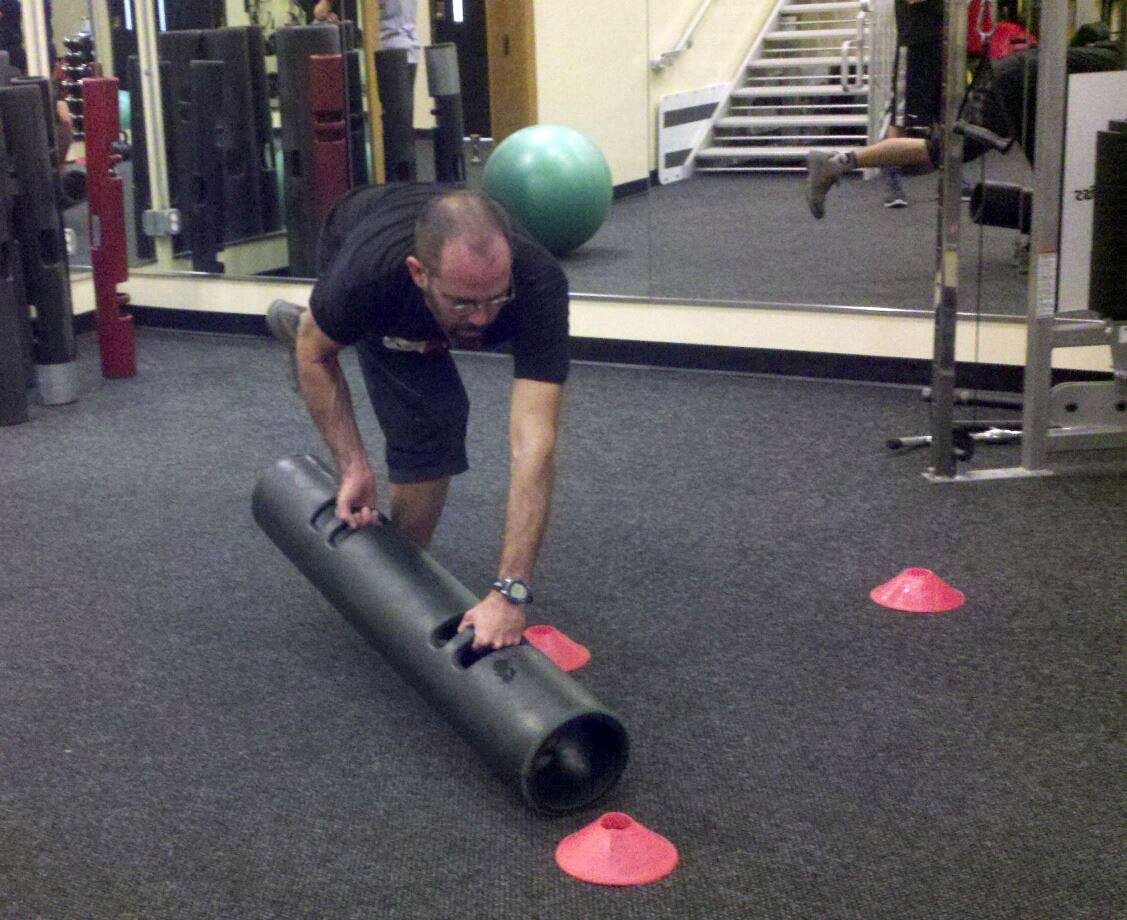
Prevent crashes. In my clinics we talk about staying centered and driving beautiful violence into the ground. The more and better you can do this, the more insulated you are from the madness. However, no matter how good you are, the ground sometimes drives ugly violence into you. The forces in these moments — hitting an unseen rock, for example — can be huge. The stronger you are, the better you can handle these forces while staying balanced. Watch a World Cup downhill racer. Half of those impacts would end a normal person.
Prevent injuries. Let’s say you flop over the bars and there’s no time to roll. You hit hands first: BAM! Are you strong enough to manage the forces without smashing your face? I hope so. Here’s where that 300-lb bench press might come in handy. Not to mention: When you’re tumbling into a ravine, the more body armor you have in the form of muscle, the better.
Go faster/better everywhere. When you make your 100 percent stronger, you also make your 50 percent stronger. Getting stronger changes everything about the way you sit, stand, pedal, corner and pump on a bike. This past winter, as Erin took national DH champ Alex Willie and I into a heavier strength phase, I started looking at terrain differently. I’d be looking at two rollers I’d always pumped and think, “I’ll bet I can sprint and double those …” and I could.
Big pull, big push. Critique: Riding over a rock
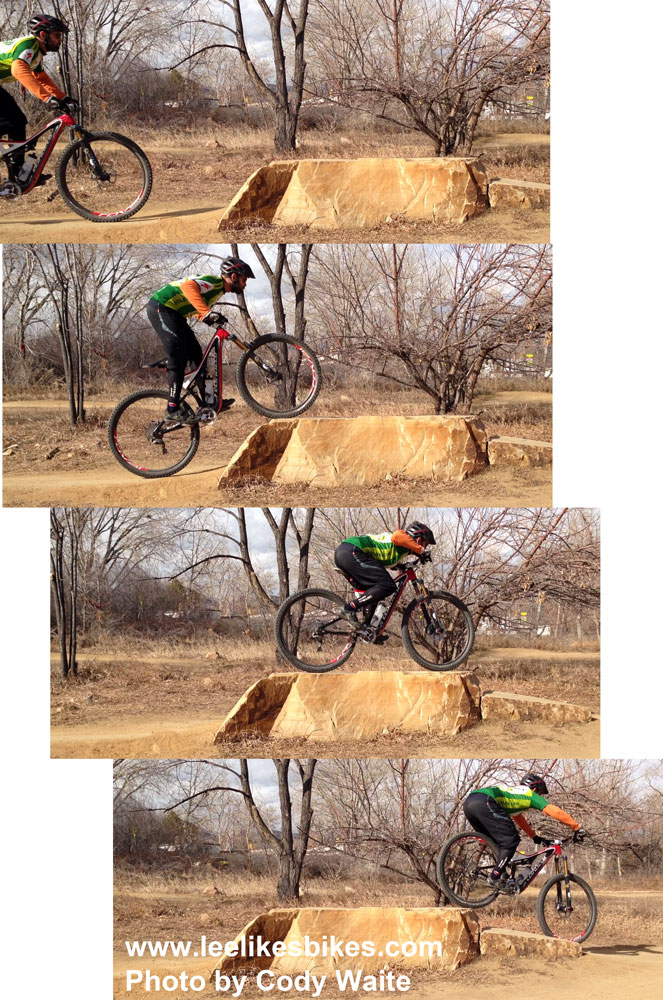
Keep you sane and fit into your life. We can’t ride sweet trail every day, which is just as well because that won’t make you ultimately fast anyway. You can bang out a strength workout pretty much anywhere in 60, 40, 30, 20 or even 10 minutes. Barbells, bands, boulders or bodyweight: Do what you can when you can. That’s way better than totally missing a workout.
I think your brain is constantly monitoring the stability, mobility and strength of your entire system. The stronger you are, the more your brain lets you do. I’ll bet someone like Lopes or Gee Atherton sees possibilities everywhere.
About plyometrics: If you are shredding your bike properly, you are already performing sport-specific, dynamic, explosive movement. Erin says no need to practice this in the gym. It’s too easy to get hurt. And it would be way radder to get hurt on the bike, eh?
If a rider is having trouble firing from the hips on the pump track or in the dirt jumps, I have him or her leap onto stuff. This trains the movement we need on the bike, and it can be easier to learn on your feet than in a huge set of doubles. But we don’t do it in an explosive cycle like you would in a plyo program. We focus on clean, wavelike movement and Awesome Power(tm).
Pro XC racer Judy Freeman:
Me, not feeling so good today. Sore low back, not feeling integrated. Note the hand touch. I wasn’t riding well either.
Ideally, you will:
Find a place(s) where you can work out consistently. A gym like Rally has the most options and expertise, but you can work out in the woods, at the beach, in a hotel room, in your driveway or wherever you want. Use weights, rubber bands, rocks or your kids. Just make sure you’re moving well and with the proper resistance.
Imagine shredding a pump track or rock garden while stabilizing a weight above your head. That’s the QuadMill at RallySport. You’re not gonna get this kind of training at home.
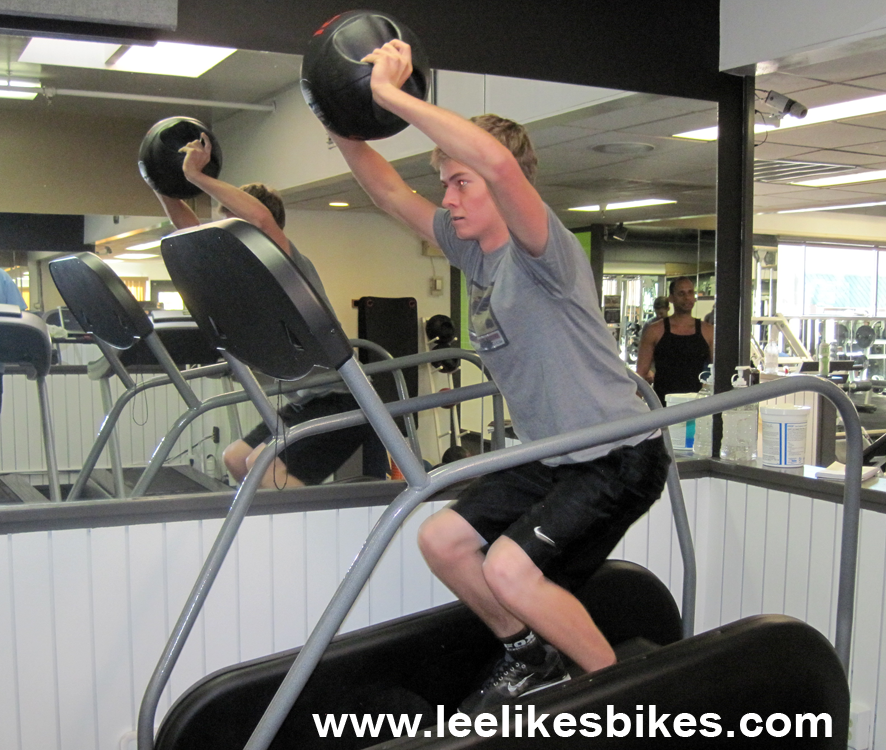
A dumbbell, a band, a bar and a plan. My road kit.

Start each off season with focused stability and mobility work. Learn to move like a human. Perform “functional” movements like cable pulls and single legged deadlifts. Maintain stability and mobility all the time.
Last night’s ski conditioning class at RallySport. Lots of jumping around, but no plyos. Dude, I am sore today.
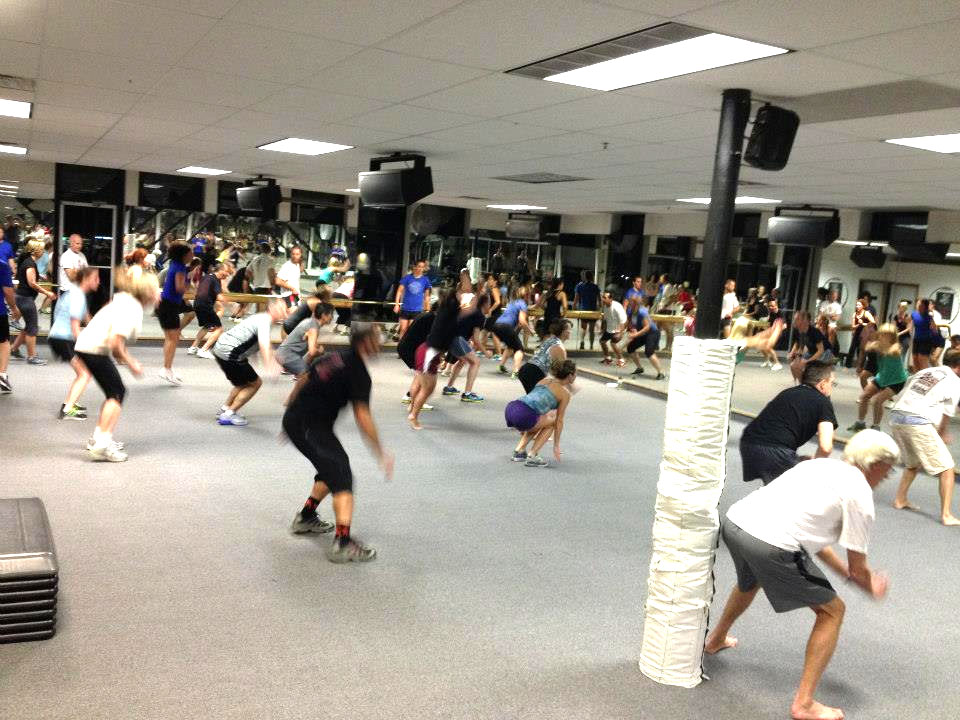
When you’re ready to do so safely, start building strength. Classic multi-joint weightlifting exercises work well for this.
Building strength: Lee pushes and Alex pulls.
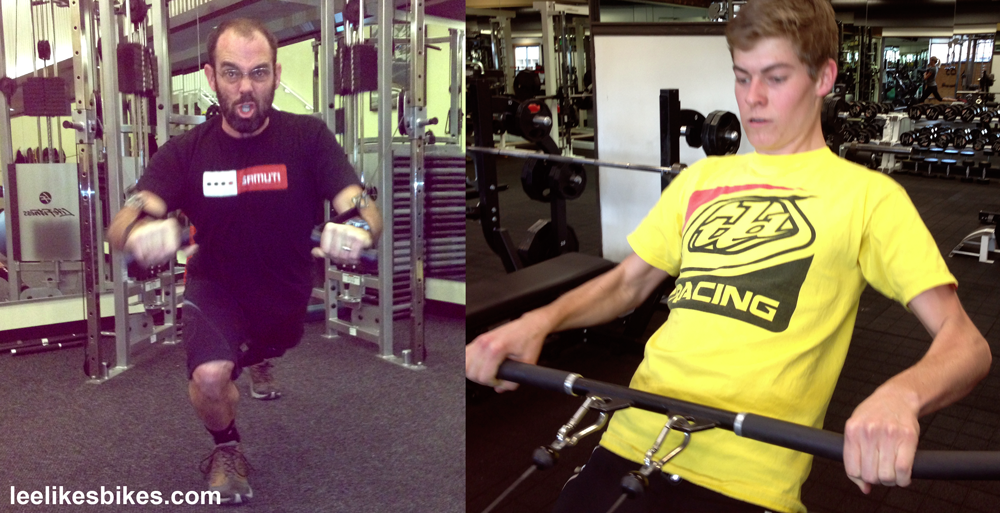
Alex learns the front squat. It’s safer than the back squat.
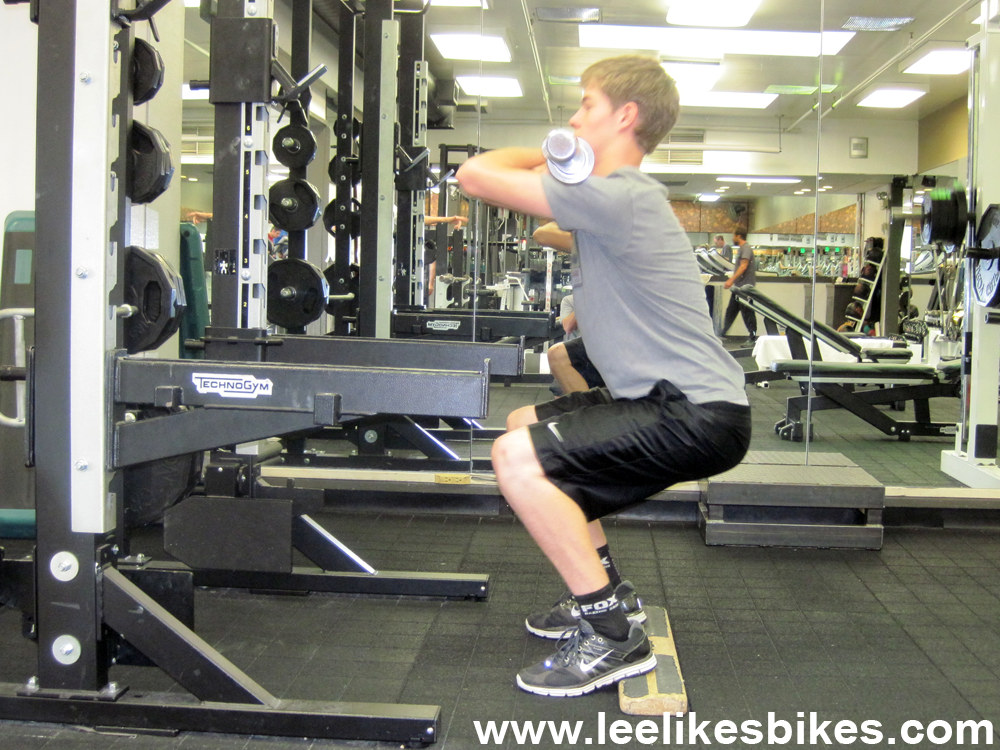
As the season approaches, do less gym and more bike. Refine your riding skills and fitness, and learn to use your new strength on the bike.
In the riding season, focus on riding. To compliment the endurance and bike-specific movement, do 1-2 off-bike strength sessions each week. This will help you stay strong and safe on the bike, and it will surely help on moving day.
Keep it simple. Some trainers make this awfully complicated, but that’s not necessary. Move well in all the major directions. Use enough resistance to stay strong.
During the busy riding/coaching season, I perform six movements that maintain bike-specific and general strength. I can do this sequence anywhere (usually at my van, right after a ride). Each round takes 10 minutes. I shoot for two rounds. If time/energy are short I’ll do one round. If I’m not riding that day I’ll do three. If I’m feeling really tight, I’ll do one light round as a warmup. This approach — learned from Erin — is super simple and very adaptable. As soon as I can, I’ll publish the exercises.
The squat row: a very good exercise for mountain bikers.

Do whatever works for you, but I can’t overemphasize how important stability, mobility and strength are to you as a cyclist and as a person. As I get older, this is becoming more and more clear. I wish I had Erin as a teenager. Today I’d be way faster — and less injured. And it turns out girls don’t care how much you can bench press.
Braaap!
Lee
Know more. Have more fun!
Join the leelikesbikes mailing list:

Leave a Reply
Want to join the discussion?Feel free to contribute!